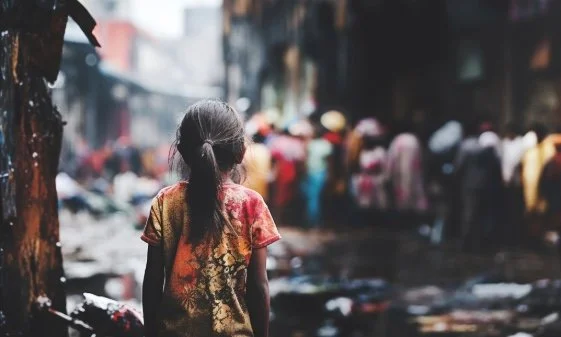India’s Hunger Rate Stands Still as World Hunger Falls
On World Food Day, a UN Report Shows No Progress in a Decade in the Country
October 16, 2025
October 16 is World Food Day. On this day, the 2025 edition of The State of Food Security and Nutrition in the World reports that global hunger has fallen, with 8.2 percent of the world’s population undernourished in 2024, down from 8.7 percent in 2022. But the report also shows that India has made no real progress. The country’s three-year average undernourishment rate for 2022 to 2024 is 12 percent, the same as it was a decade earlier.
The data shows that undernourishment in India fell steadily until 2017 to 2019, reaching a low of 10.5 percent. After that, the trend turned. The rate rose to 11.8 percent in 2018 to 2020, then to 13.4 percent, and peaked at 14.3 percent in 2020 to 2022. Since then, it has fallen slightly to 13.5 percent and now stands at 12 percent for 2022 to 2024. That is still higher than most years between 2015 and 2020. The drop in hunger before the pandemic has been mostly lost. The recovery has been slow.
India’s lack of progress looks worse against the global trend.
Hunger and food insecurity have eased in much of Asia and in South America. In Africa, they have grown worse. India’s economy has recovered faster than many, but hunger has not fallen. This calls into question how well food schemes are working. The Public Distribution System (PDS), the Garib Kalyan Anna Yojana and POSHAN Abhiyaan have been pushed hard by the government. Yet the figures suggest the promises have not matched results.
India’s hunger rate is 3.8 points higher than the world average. In a country of over 1.4 billion people, that means millions go without enough to eat. The report says that 28 percent of the world faced moderate or severe food insecurity in 2024, which means people lacked steady access to safe and nutritious food. But it gives no figures for India, saying it’s either unavailable or not reported. Without that, it is hard to know how deep the problem runs. Hunger rates alone do not show how many people live with food stress day to day.
These figures raise hard questions for how India is governed. The country runs one of the biggest food welfare schemes in the world and has a constitutional duty to protect life and dignity, which includes food. The lack of progress shows that the system is not reaching those who need it most. It also shows that growth by itself does not lead to better nutrition. The problem lies deeper, in how food is made affordable, available and worth eating.
The years from 2019 to 2022 stand out. Hunger rose fast during the pandemic and lockdowns. But the drop since then has been slow. This casts doubt on how strong India’s food systems and safety nets really are. It also suggests that many people, including migrant workers, informal labourers and others on the margins, were left out of support.
In a statement released on World Food Day, the Press Information Bureau said India’s food system is stronger than ever, citing a rise of about 90 million metric tonnes in foodgrain output and more than 64 million metric tonnes in fruit and vegetable production over the past decade. It said India now ranks first in milk and millet production and second in fish, fruit and vegetables, with honey and egg output doubling since 2014. Agricultural exports, the government added, have nearly doubled in 11 years. While the government counts its harvests and exports, the real test is how many people can eat. The UN report shows that millions still go hungry even as fields yield more and exports climb.
The government must rethink its food policies, fix local safety nets, and deal with the deep gaps that keep people from getting enough to eat.
You have just read a News Briefing by Newsreel Asia, written to cut through the noise and present a single story for the day that matters to you. Certain briefings, based on media reports, seek to keep readers informed about events across India, others offer a perspective rooted in humanitarian concerns and some provide our own exclusive reporting. We encourage you to read the News Briefing each day. Our objective is to help you become not just an informed citizen, but an engaged and responsible one.

